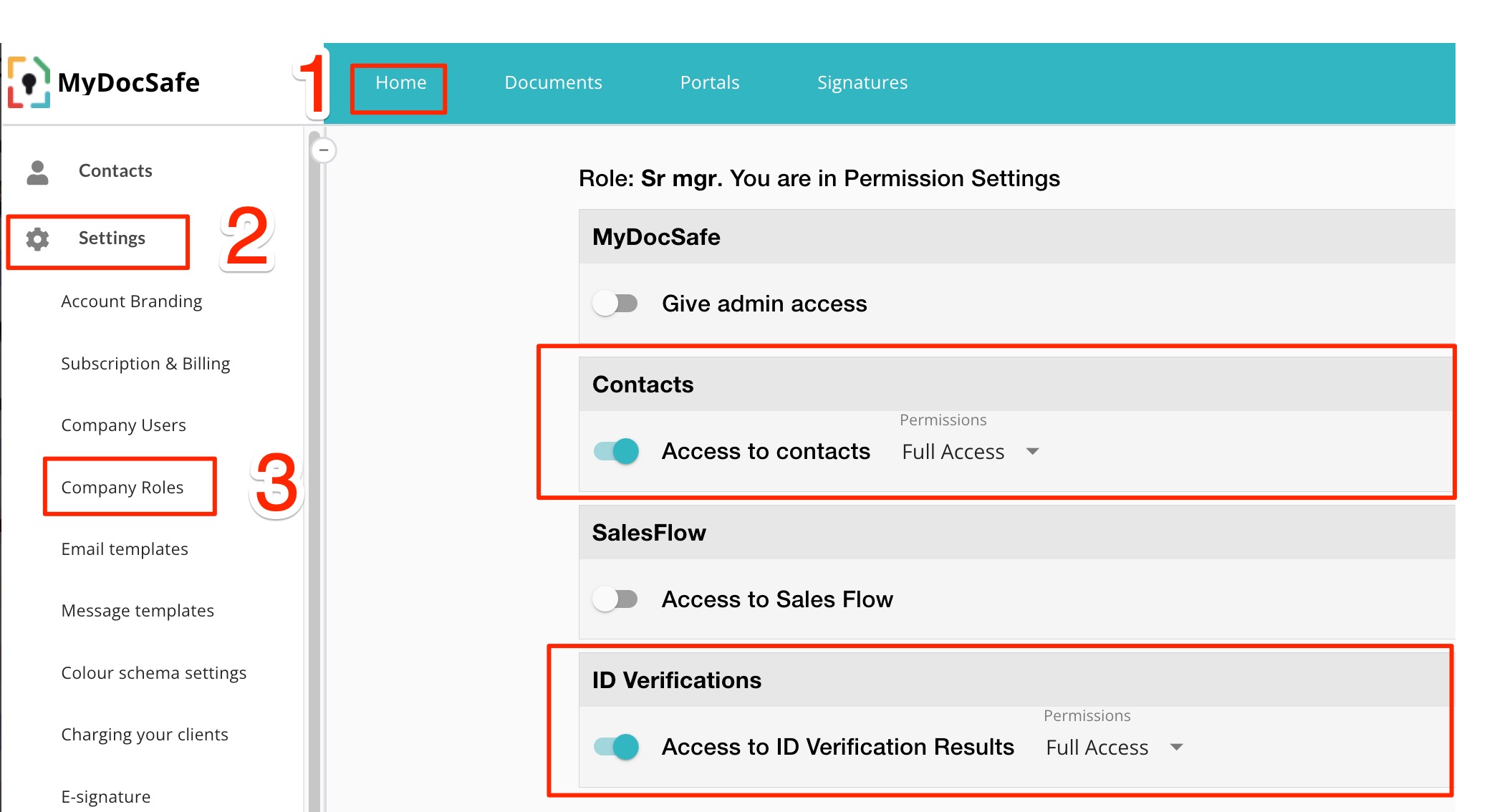Understanding the ‘Need to Know’ Data Access Principle
The ‘Need to Know’ data access principle is a fundamental security concept designed to limit access to sensitive information. Under this principle, individuals or entities are granted access only to the data necessary for them to perform their specific tasks or roles. This approach minimises the risk of unauthorised exposure or misuse of data by ensuring that only those with a legitimate and specific requirement can access it.
Key Aspects of the ‘Need to Know’ Principle
Restricted Access: Information access is restricted to those who need it for their job functions, preventing data from being freely available to all employees or users. This reduces the risk of data breaches. For example, with MyDocSafe, you can control access to the CRM and limit access to AML/KYC information as needed.
Role-Based Access Control (RBAC): Permissions are assigned based on roles within an organization. Each role can have defined responsibilities and access rights. MyDocSafe implements RBAC through the “company roles” section, ensuring compliance officers have access to Contacts and ID verification information but cannot trigger sales or registration workflows.

Data Classification: Data is categorised by sensitivity and criticality. Only those with the appropriate clearance level can access higher classification levels. MyDocSafe distinguishes between six data classifications, including internal company data, client contact information, AML/KYC records, signed contracts, and project data.
Least Privilege: This principle ensures users are granted the minimum level of access needed to perform their work, limiting potential damage if credentials are compromised.
Auditing and Monitoring: Regular audits and monitoring of access logs ensure compliance with the ‘Need to Know’ principle and detect unauthorised access attempts.
Clearance and Training: Employees and users must have the necessary clearance and training before accessing sensitive information, ensuring they understand data security’s importance and associated risks.
The ‘Need to Know’ principle is crucial for maintaining the confidentiality and integrity of sensitive data, especially in security-sensitive environments such as military, government, healthcare, and financial sectors. MyDocSafe facilitates the implementation of this principle through its AML/KYC Dashboard.
Example 1: The AML/KYC Dashboard
As a compliance officer or business owner acting as one, it’s essential to know your clients. MyDocSafe simplifies embedding identity verification steps into client registration or onboarding workflows, with several instructional videos available here.
Previously, tracking ID tests and knowing when to refresh them was challenging due to clients having access to multiple portals. Clients might be directors of various companies or parties to different deals or projects, each with its own ID verification workflow. Requiring the same director to undergo multiple ID verification tests for different portals would be inefficient and cumbersome.
The MyDocSafe Contacts Dashboard, which serves as both a CRM and a Compliance Dashboard, addresses this issue. It provides a comprehensive view of all ID verification tests initiated through the platform, ensuring a person is not required to undergo multiple tests unless necessary. For instance, a second ID test may be required if the first checked only identity, and the second requires proof of address and a Politically Exposed Person (PEP) test.
The dashboard displays the current status of all ID verification tests, associating each test’s data with the contact sheet data. The status of each test is either ‘up to date’ or ‘expired,’ with the ‘expired’ flag set manually or automatically via a timer (from 0 to 24 months). The table is sortable and paginated, allowing compliance officers to quickly identify contacts needing attention.
Crucially, ID verification data can be hidden from team members who do not need access, ensuring everyone has access to the same CRM but only specific officers see detailed client information, as required by a well-implemented client data protection system based on the ‘Need to Know’ principle.

Example No. 2: Applying the ‘Need to Know’ Principle to HR Data
Another critical application of the ‘Need to Know’ principle is within Human Resources (HR) data management. HR data, which includes sensitive information such as employee personal details, performance reviews, and salary information, must be strictly segregated from client data to ensure privacy and compliance with data protection regulations. With MyDocSafe, organizations can create ring-fenced accounts that segregate HR data from client data. This setup allows different sets of users to access specific types of data based on their roles and responsibilities, ensuring that only authorised personnel can view or manage HR-related information. The account owner or board directors, however, can maintain oversight and access to both HR and client data, enabling efficient management while upholding stringent data access controls. This separation is crucial for maintaining data integrity and preventing unauthorised access, embodying the essence of the ‘Need to Know’ principle.
To create an HR department in MyDocSafe, use the ‘+’ button from Home:
